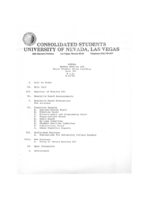Search the Special Collections and Archives Portal
Search Results

Juliana Urtubey oral history interview: transcript
Date
Archival Collection
Description
Oral history interview with Juliana Urtubey conducted by Nathalie Martinez and Barbara Tabach on May 24, 2021 for the Latinx Voices of Southern Nevada Oral History Project. Born in Colombia, Julia was able to immigrate with her family to the United States when she was six years old. The family lived in Chicago, Illinois and later in Phoenix, Arizona. Juliana moved to Las Vegas in 2013 and taught learners with special education needs at the elementary level. In 2021, she was named the National Teacher of the Year, the first Latina and the only Nevadan to ever hold the distinction. Juliana personally received the award from Dr. Jill Biden. Subjects discussed include: Colombia, Chicago, Illinois, National Teacher of the Year, and bilingual education.
Text

The Sahara Hotel and Casino, don the Beachcomber Restaurant, and the marquee: photographic film
Date
Archival Collection
Description
Image

Film transparency of of the Navajo Bridge, Grand Canyon, Arizona, circa 1930s
Date
Archival Collection
Description
Image

Letter from R. L. Adamson (Los Angeles) to F. H. Knickerbocker, September 10, 1928
Date
Archival Collection
Description
Summary of the amount of water used by the railroad, the water company, and for irrigation on the Las Vegas Ranch in 1928 for use in calculating water rates.
Text

County agent project progress report, Flood control - soil conservation, November 1, 1939
Date
Archival Collection
Description
Report on flood control efforts in the Virgin Soil Conservation District, the Moapa Soil Conservation District, and the Virgin River Watershed. Project Number: State Office #172, Clark Co. #12
Text

Meeting minutes for Consolidated Student Senate, University of Nevada, Las Vegas, May 12, 1981
Date
Archival Collection
Description
Text




